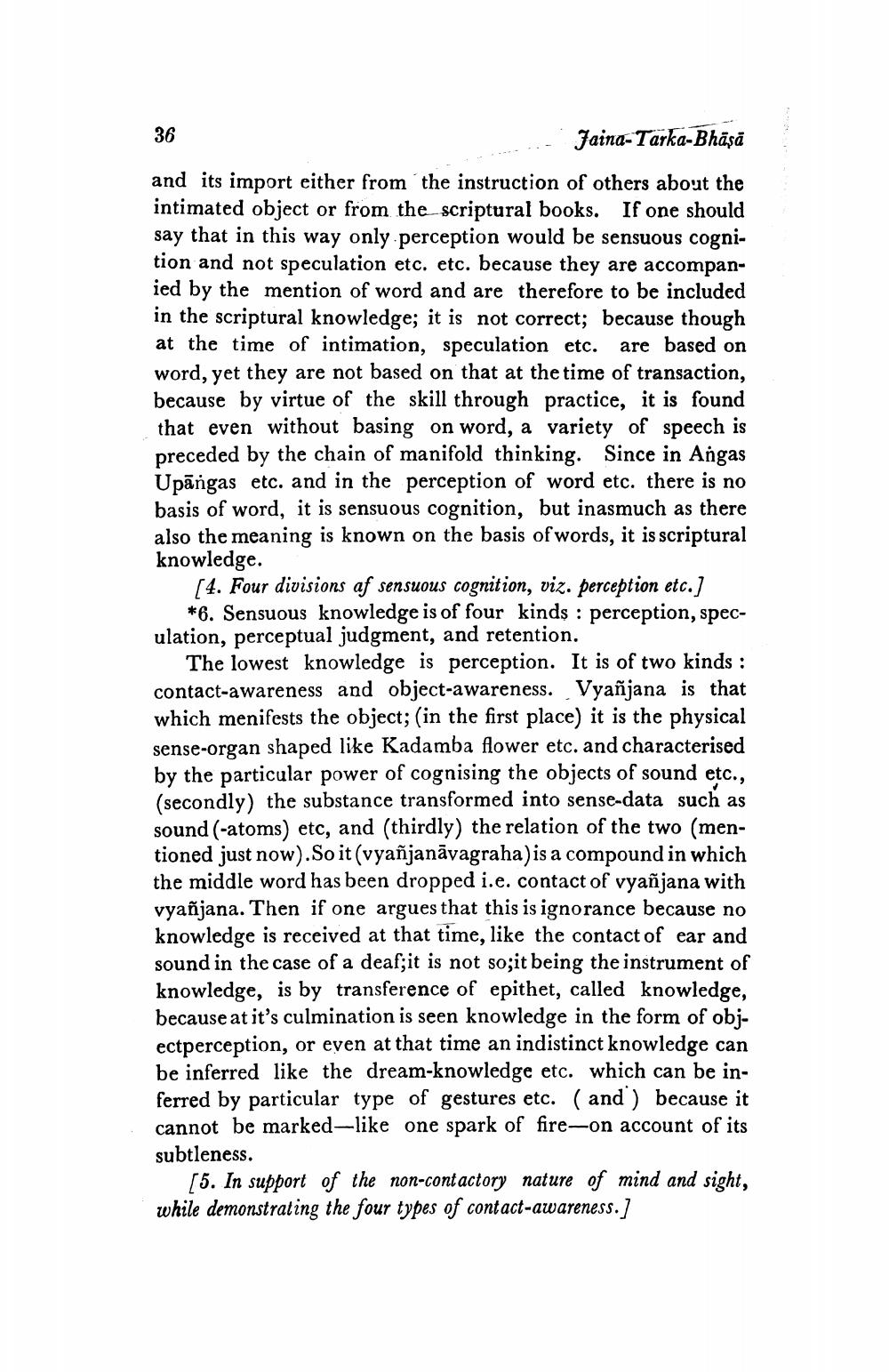________________
36
Jaina-Tarka-Bhāsā and its import either from the instruction of others about the intimated object or from the scriptural books. If one should say that in this way only perception would be sensuous cognition and not speculation etc. etc. because they are accompanied by the mention of word and are therefore to be included in the scriptural knowledge; it is not correct; because though at the time of intimation, speculation etc. are based on word, yet they are not based on that at the time of transaction, because by virtue of the skill through practice, it is found that even without basing on word, a variety of speech is preceded by the chain of manifold thinking. Since in Angas Upāngas etc. and in the perception of word etc. there is no basis of word, it is sensuous cognition, but inasmuch as there also the meaning is known on the basis of words, it is scriptural knowledge.
[4. Four divisions af sensuous cognition, viz. perception etc.]
*6. Sensuous knowledge is of four kinds : perception, speculation, perceptual judgment, and retention.
The lowest knowledge is perception. It is of two kinds : contact-awareness and object-awareness. Vyañjana is that which menifests the object; (in the first place) it is the physical sense-organ shaped like Kadamba flower etc. and characterised by the particular power of cognising the objects of sound etc., (secondly) the substance transformed into sense-data such as sound (-atoms) etc, and (thirdly) the relation of the two (mentioned just now).So it (vyañjanāyagraha) is a compound in which the middle word has been dropped i.e. contact of vyañjana with vyañjana. Then if one argues that this is ignorance because no knowledge is received at that time, like the contact of ear and sound in the case of a deaf;it is not so;it being the instrument of knowledge, is by transference of epithet, called knowledge, because at it's culmination is seen knowledge in the form of objectperception, or even at that time an indistinct knowledge can be inferred like the dream-knowledge etc. which can be inferred by particular type of gestures etc. (and) because it cannot be marked—like one spark of fire-on account of its subtleness.
[5. In support of the non-contactory nature of mind and sight, while demonstrating the four types of contact-awareness.]




